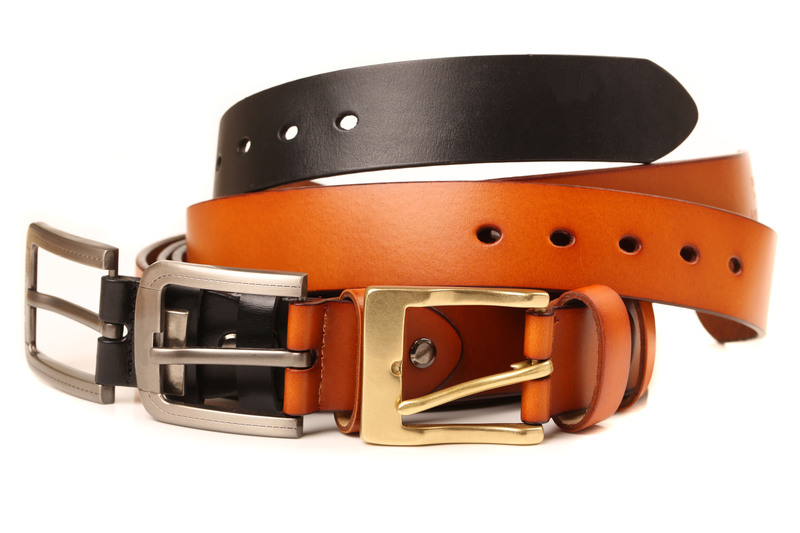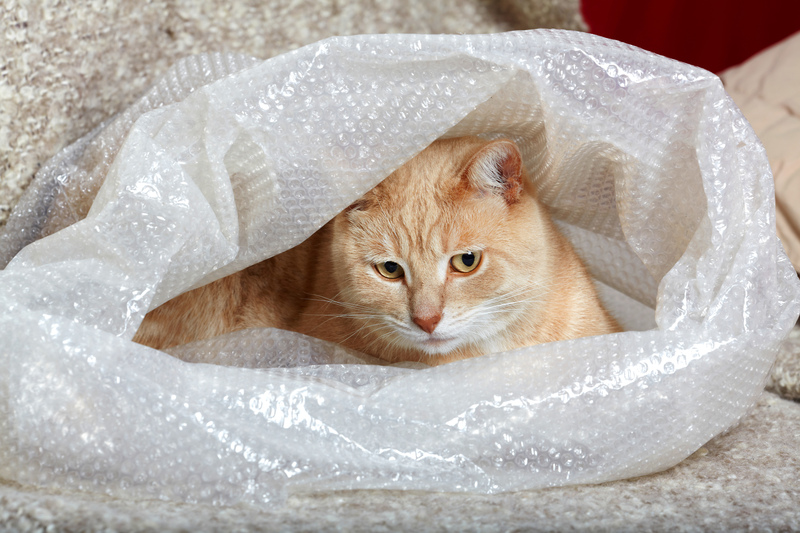Care Techniques for a Freezer When Not in Regular Use
Posted on 17/05/2025
Care Techniques for a Freezer When Not in Regular Use
Freezers are essential appliances in many households, keeping food preserved for extended periods. But what happens when your freezer is not in regular use? Maybe you have a spare unit, a deep freezer in the garage, or simply need to store it for a season. Proper care and maintenance of your freezer during periods of inactivity are crucial to prolong its lifespan and prevent malfunction or damage. In this guide, we'll walk you through the essential techniques for caring for your freezer when it's not in frequent use.
Why Proper Freezer Maintenance Matters
It's easy to overlook appliances when they're not in constant demand, but neglect can lead to expensive repairs or even permanent damage. Effective freezer care when not in use not only shields your investment but also ensures food safety and appliance efficiency when you put it back into service.
The Risks of Ignoring Inactive Freezer Care
- Mold and Mildew Growth: Unattended moisture can promote unpleasant and harmful fungal growth.
- Bad Odors: Trapped air, old food particles, and stagnant water can cause persistent freezer smells.
- Compressor and Seal Damage: Residual pressure or ice can harm vital freezer components.
- Pest Infestation: Small leaks or unsealed doors invite insects and rodents.
To avoid these issues, a series of strategic steps should be followed. Below, we break down the most effective freezer preservation techniques when not in everyday use.

Best Practices: Care Techniques for an Unused Freezer
Whether you plan to leave your freezer disconnected for weeks or months, follow these step-by-step care methods to keep your appliance in excellent condition.
1. Empty and Defrost the Freezer
Begin by removing all food items from the freezer. Even if you think you have non-perishable items, complete removal is vital for cleanliness and odor prevention.
- Turn Off and Unplug: Disconnect the freezer from the power supply before cleaning.
- Perform a Complete Defrost: Leave the door open to allow all ice to melt naturally. Speed up the process with bowls of hot water if needed, but never use sharp objects to chip away ice as this can damage the interior.
- Remove and Soak Trays & Shelves: Take out all removable parts and wash them separately with mild soapy water.
2. Deep Clean the Interior and Exterior
A thorough clean is essential for a freezer out of service. Use a solution of baking soda and water (about 1-2 tablespoons of baking soda in a quart of warm water) to wipe down all interior surfaces and gasket seals.
- Sanitize: Pay particular attention to corners and tight spaces where mold spores can hide.
- Dry Completely: Use a dry towel to ensure all surfaces are free from lingering moisture.
- Clean the Exterior: Dust coils and vacuum around the base to prevent dust buildup.
3. Leave the Freezer Door Ajar
One of the most critical freezer care techniques when not in regular use is to leave the door slightly open. This prevents moisture buildup and deters mold.
- Support the Door: Use a wedge, towel, or specifically designed door prop to keep the door just slightly ajar. Make sure it's wide enough for air circulation but not so wide that it gets bumped or is a hazard.
- Seal Removal: If it's a chest freezer or a unit being moved into storage, consider removing the door entirely.
4. Unplug and Protect the Power Cord
Disconnecting the appliance not only saves energy but also prevents serge-related damage. Store the power cord neatly.
- Coil the Cord: Coil the cord loosely to avert tangling and secure it with a velcro strap or a zip tie. Avoid placing it on the floor where water might accumulate or rodents could chew it.
- Protect from Moisture: Keep any cords or plugs off potentially damp surfaces.
5. Control the Freezer Environment
The placement and surrounding environment of your freezer play a crucial role in its long-term care:
- Temperature: Avoid placing the freezer in uninsulated areas prone to extreme temperature fluctuations. Attics and garages may not be ideal unless properly ventilated.
- Elevation: Raise the freezer slightly off the floor, especially if in a basement or garage, using blocks or a pallet to protect it from dampness and allow air circulation.
- Dust Cover: Use a breathable appliance cover or a clean sheet to shield your freezer from dust. Don't use plastic sheets tightly as this can trap moisture inside.
6. Moisture and Odor Prevention Strategies
It's not uncommon for old freezers to develop stubborn smells over time, particularly during periods of disuse. Here are some effective strategies:
- Baking Soda: Place an open box inside the unplugged freezer (if the door will be closed at times) to absorb odors.
- Charcoal: Activated charcoal or charcoal briquettes (in a shallow bowl) can neutralize stronger smells.
- Silica Gel Packs: These absorb moisture and prevent condensation inside the cavity of the freezer.
7. Regular Check-Ins
Even when not using the freezer, it's essential to inspect it periodically:
- Monthly Inspection: Check for signs of dust buildup, pest activity, or excess moisture. Wipe any surfaces if necessary.
- Look for Leaks: Periodically check underneath for water or coolant leaks.
- Odor Check: Give the freezer a sniff to catch potential mustiness early.
Additional Freezer Storage and Long-term Care Tips
Sometimes, your freezer may be out of use for extended periods--such as during home renovations, seasonal changes, or long absences. Consider these added measures for long-term freezer preservation:
Proper Storage Location
- Indoor vs. Outdoor: Always store your freezer in a dry, shaded, and temperature-stable location. Direct exposure to sunlight, moisture, and heat can cause exterior rust and internal component failure.
- Ventilation: Ensure enough space around the freezer for air circulation, especially near the coils and compressor.
- Rodent and Pest Protection: Use natural deterrents (like mint sachets) around the base or entry points to ward off small rodents or insects.
When to Leave a Freezer Plugged In
Are there scenarios when it's better to keep your freezer running even if empty or rarely accessed? Yes:
- If the freezer is in a high-moisture environment and is frost-free, keeping it plugged in (on a low setting) can ward off condensation and frost.
- If the appliance warranty requires periodic running, check your manual for compliance.
- Freezers connected to smart home monitoring systems sometimes require a powered connection for alerts.
Bringing Your Freezer Back into Regular Use
Once you're ready to use your freezer again, proper reactivation steps ensure optimal performance:
- Thorough Inspection: Before plugging in, inspect the cord, interior, seals, and controls for dust, mildew, or rodent damage. Clean if needed.
- Interior Refresh: Wipe the surfaces out again with a baking soda solution or diluted vinegar.
- Precool: Plug in and let the freezer cool for several hours (typically 6-12 hours) before loading food.
- Check Temperature: Ensure the unit reaches the recommended temperature (usually at or below 0?F/-18?C) before use.
Common Mistakes to Avoid with Idle Freezers
- Poor Cleaning: Skipping a deep clean before storage inevitably leads to bad smells and possible mold.
- Shutting Door Tight: A closed, unplugged freezer is a mold and mildew incubator.
- Ineffective Covering: Using airtight plastic sheeting traps moisture--always opt for breathable fabric covers.
- Overlooking Inspections: Out of sight, out of mind? Don't forget to perform regular visual and smell checks.

Frequently Asked Questions on Freezer Inactive Care
Can I leave my unplugged freezer shut?
No--never keep an unplugged freezer completely closed for extended periods. This traps moisture, quickly leading to odor and mold problems. Always leave the door slightly open or remove it entirely.
How do I stop mold growing in a stored freezer?
After cleaning and drying all surfaces, use baking soda or silica gel packs to absorb residual moisture. Leave the door open for air circulation, and check the unit periodically.
Should I cover my freezer in storage?
A lightweight, breathable cover (such as a sheet) can protect against dust without trapping moisture. Avoid airtight coverings.
How often should I check my unused freezer?
Inspect at least once per month for odors, moisture, pests, or leaks--more often in humid or changing climates.
Conclusion: Proactive Freezer Care for Long Appliance Life
Whether your freezer sits idle for a few weeks or an entire season, investing time in proper maintenance will guarantee its performance and cleanliness for years. By following the top freezer care techniques during periods of non-use--defrosting, deep cleaning, controlling moisture, and maintaining good air flow--you protect your appliance and your investment.
Stay proactive with regular inspections, environmental control, and odor prevention to ensure your freezer delivers optimal freezing power when you need it in the future. Well-maintained, inactive freezers last longer, use less energy, and return to service quickly and reliably.
Bookmark this helpful guide for easy reference next time you need to store your freezer--and give your appliances the care they deserve!



